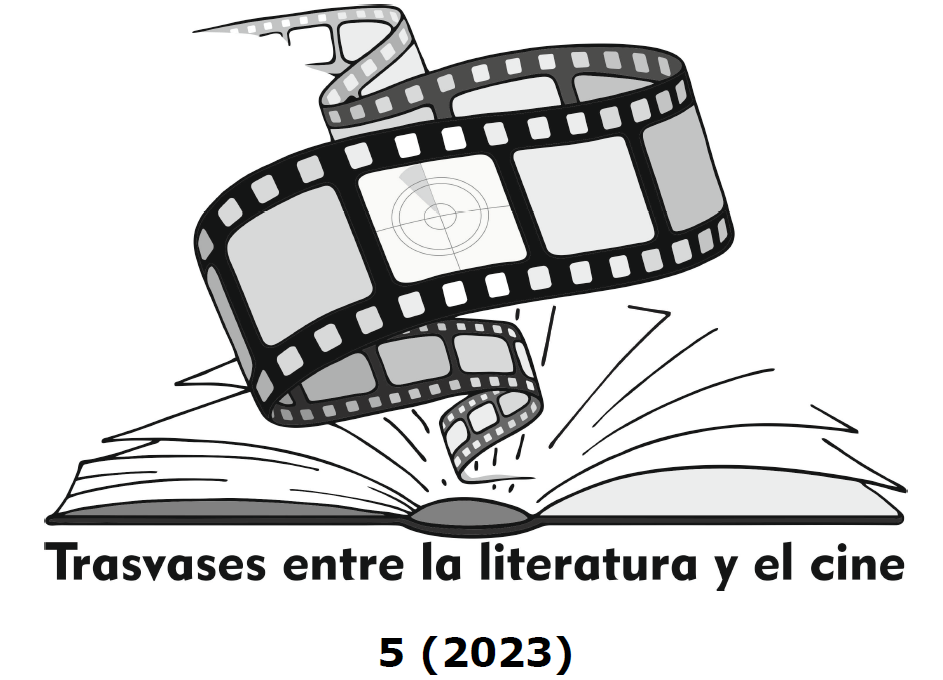El viejo y el mar filme animado de Alexandr Petrov
DOI:
https://doi.org/10.24310/tlc.5.2023.15525Palabras clave:
Alexandr Petrov, Ernest Hemingway, Genette, transtextualidad, análisis comparativoResumen
En este trabajo analizamos el hipertexto fílmico de animación realizado por Alexandr Petrov, derivado de la novela de Ernest Hemingway, a partir de algunas propuestas formuladas por Gérard Genette sobre la transtextualidad, para destacar los principales fenómenos de transformación que se verifican en el filme, respecto a la obra literaria, así como sus consecuencias semánticas.
Entre estas transformaciones se encuentran la reducción del texto literario, pero también la reorganización de ciertos elementos, la exclusión de algunos puntos de anclaje sociocultural que eran señalados en la obra escrita. Estos fenómenos tienen consecuencias semánticas importantes y orientan la interpretación de la trama en un sentido distinto al del texto original.
Descargas
Métricas
Publicación Facts
Perfil de revisores N/D
Información adicional autores
Indexado: {$indexList}
-
Indexado en
- Sociedad Académica/Grupo
- N/D
- Editora:
- Universidad de Málaga
Citas
Academia Rusa de las Artes (2022), «Alexander Petrov/Петров, Александр Константинович», Miembros de la Academia. [En línea https://www.rah.ru/the_academy_today/the_members_of_the_ academie/member.php?ID=51731. Fecha de consulta: 12/01/2022]
Baker, Sheridan (1967), Ernest Hemingway: An Introduction and Interpretation (American Authors and Critics Series), New York, Barnes
& Noble.
Baker, Carlos (1972), Ernest Hemingway: A Life Story, Princeton (New Jersey), Princeton University Press.
Barthes, Roland (1994), El susurro del lenguaje, Barcelona, Paidós.
Bhoi, Chittaranjan (2015), «Dynamics of Style and Technique: A Reading of Hemingway’s The Old Man and the Sea», American Research Journal of English and Literature, 2, págs. 5-9.
Breit, Harvey (1952), «Talk with Ernest Hemingway», New York Times, 7 de septiembre, New York, pág. 20; y «The Old Man and The Sea», Saturday Review, 6 de septiembre, pág. 194.
Bloom, Harold (1973), La Angustia de las Influencias, Caracas, Monte Ávila Editores.
Bloom, Harold (2008), Bloom’s Modern Critical Interpretations. Ernest Hemingway’s The Old Man and the Sea, New York, Bloom’s Literary Critisim.
Brenneren, Gerry (2008), «Psychology», en Harold Bloom (ed.) Bloom’s Modern Critical Interpretations. Ernest Hemingway’s The Old Man and the Sea, New York, Bloom’s Literary Critisim, págs. 109-122.
Dällenbach, Lucien (1976), « Intertexte et autotexte », Poétique, 26, págs. 282-296.
Eco, Umberto (2003), Decir casi lo mismo. Experiencias de traducción, Barcelona, Lumen.
Elizondo, Sonny y Weinbloom, Elizabeth (2011 y 2023), «The Old Man and the Sea Gregorio Fuentes: The Inspiration for the Character of
Santiago». GradeSaver, [En línea https://www.gradesaver.com/theold-man-and-the-sea/study-guide/gregorio-fuentes-theinspiration- for-the-character-of-santiago Fecha de consulta: 13/01/2023]
Genette, Gérard. (1989), Palimpsestos. La literatura en segundo grado. Madrid, Taurus.
Genette, G. (1998), Nuevo discurso del método, Madrid, Cátedra.
Greimas, A. J. (1984), «Semiótica figurativa y semiótica plástica», en Gabriel Hernández Aguilar, Figuras y estrategias en torno a una
semiótica de lo visual, Ciudad de México, Siglo XXI, págs. 17-42.
Han, Qi (2015), «New Discussion about ‘Cannot Be Defeated’-Read the Old Man and the Sea from the Perspective of Ecocriticism», Open
Journal of Social Sciences, 3, págs. 196-199 [En línea http://www.scirp.org/journal/jss Fecha de consulta: 13/01/2023].
Hemingway, Ernst (2020), El viejo y el mar, Quito, Luna de Bolsillo.
Hemingway, Ernst (2008), The Old Man and The Sea, New York, Bloom.
Justus, James H. (2008), «The Later Fiction: Hemingway and the Aesthetics of Failure», en Harold Bloom (ed.) Bloom’s Modern Critical Interpretations. Ernest Hemingway’s The Old Man and the Sea, New York, Bloom’s Literary Critisim, págs. 53-67.
Kristeva, Julia (1967), «Bakhtine, le mot, le dialogue el le roman», Critique, 239, págs. 438-65.
Hernández Fustes, Otto et. alt. (2021), «Did Hemingway expose features of pain in the protagonist of the old man and the sea»,
International Journal of Development Research, 2, págs. 44771-44773 [En línea http://www.journalijdr.com/did-hemingway-expose-features-pain-protagonist-old-man-and-sea Fecha de consulta: 12/01/2023].
Malpartida Tirado, Rafael (2022), Una nueva mirada entre la literatura y el cine: el legado de Juan Luis Alborg, Zaragoza, Libros Pórtico.
Odessa Animation Studio (2022), «Alexander Petrov». [En línea http://animation-ua.com/en/school-animation/worldanimation/ 398-alexander-petrov Fecha de consulta: 12/01/2022].
Petrov, Alexandr (1999), «The Old Man and the Sea», Canadá Media [En línea https://www.youtube.com/watch?v=YgVFKEqM6zA&t=9s
Fecha de consulta: 28/01/2021].
Riffaterre. M. (1981), «L’intertexte inconnu», Littérature, 41, págs. 4-7. [En línea: https://www.persee.fr/doc/litt_0047-
_1981_num_41_1_1330 Fecha de consulta: 18/08/2021]
Schorer, M. (1952), «With Grace Under Pressure», The New Republic, 6 de septiembre, págs. 19-20.
Smith, Tom (2020), «A manera de comentario», en E. Hemingway, El viejo y el mar, Quito, Luna de Bolsillo, págs. 7-8.
Souza Domínguez, Belén (2013), Las influencias pictóricas en la obra de Aleksandr Petrov, Palma de Mallorca, Universitat de Les Illes Balears.
Stam, Robert y Alessandra Raengo (2005), Literature and Film: A Guide to the Theory and Practice of Film Adaptation, Oxford (Carlton), Blackwell Publishing.
Wolf, Sergio (2001), Cine/Literatura. Ritos y pasajes, Barcelona, Paidós.
Zecchi, Barbara (2014), Desenfocadas. Cineastas españolas y discursos de género, Barcelona, Icaria.
Publicado
Cómo citar
Licencia
Derechos de autor 2023 Carmen Vitaliana Vidaurre Arenas

Esta obra está bajo una licencia internacional Creative Commons Atribución-NoComercial-CompartirIgual 4.0.
Aquellos autores/as que tengan publicaciones con esta revista, aceptan los términos siguientes:
- Los autores/as conservarán sus derechos de autor y garantizarán a la revista el derecho de primera publicación de su obra, el cuál estará simultáneamente sujeto a una licencia Creative Commons Reconocimento-NoComercia-Compartirigual 4.0 cuyo texto completo puede consultar en <http://creativecommons.org/licenses/by-nc-sa/4.0>
- Los autores/as podrán adoptar otros acuerdos de licencia no exclusiva de distribución de la versión de la obra publicada (p. ej.: depositarla en un archivo telemático institucional o publicarla en un volumen monográfico) siempre que se indique la publicación inicial en esta revista.
- Se permite y recomienda a los autores/as difundir su obra a través de Internet (p. ej.: en archivos telemáticos institucionales o en su página web), lo cual puede producir intercambios interesantes y aumentar las citas de la obra publicada. (Véase El efecto del acceso abierto).
Es responsabilidad de los autores/as obtener los permisos necesarios de las imágenes que están sujetas a derechos de autor.
Esta revista electrónica está editada por la Editorial de la Universidad de Málaga (UmaEditorial), siendo necesario citar la procedencia en cualquier reproducción parcial o total.








22.png)











